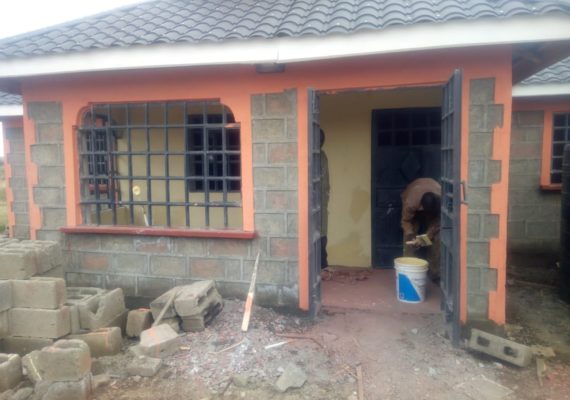Common Septic Tank Problems & How to Fix Them[Useful Guide]
Septic Tank Problems & How to Fix Them
Most people don’t pay attention to their septic system until they suddenly have a problem. If you have a septic tank problem, you will be unable to use the toilet, take a shower, or even run the dishwasher. The inconveniences that you go through while you wait for professional help is quite significant.
Here are questions that indicate the problems due to septic tank failure. How do you know if your septic system is failing? First, answer the following questions:
- Do your drains empty slowly for reasons other than old, clogged pipes?
- Does sewage back up into your house?
- Have you noticed a wet, smelly spot in your yard?
- Is your septic tank piped to a ditch or stream?
- Is your washing machine or sink piped to a road or stream?
- When it rains or the ground is wet, do you experience problems with your drains?
- When you do laundry, does a wet spot appear in your yard?
- Do you frequently have to pump your septic tank?
- Is the grass over or around your septic tank greener than the rest of your lawn?
![Common Septic Tank Problems & How to Fix Them[Useful Guide] 1 Septic Tank Problems Septic Tank Problem](https://hpdconsult.com/wp-content/uploads/2020/04/SepticTank-Problem.jpg)
- Is the area around your septic tank wet or spongy even when it has not rained for a week or more?
If you answered “yes” to any of these questions, your septic system has a problem. This means that it is not treating and disposing of sewage in a safe, environmentally sound fashion.
Also Check >>Advantages & Disadvantages of Plastic Septic Tanks
Raw sewage is extremely hazardous to your health, so you shouldn’t hesitate to call in a septic repair professional at the first sign of a problem. Some septic issues may require additional effort if you want to avoid recurrence. The problem could be one of these 9 common septic tank issues:
Clogs in the Septic Tank System
One of the most common problems that we see with septic tanks is clogs. If you are experiencing sewage backups in your toilets, showers, sinks, or other plumbing, a clog is probably at fault. Another warning sign is if your drains and toilets are slow and is usually caused by a lack of timely maintenance.
You should get your septic tank pumped regularly, exactly how often depends on factors like how many people use the system. If you do not get your tank pumped regularly, your tank can fill up and cause a backup.![Common Septic Tank Problems & How to Fix Them[Useful Guide] 2 Septic Tank Problems Septic Tank Problem](https://hpdconsult.com/wp-content/uploads/2020/04/SepticTank-Problem-1.jpg)
If you have been getting your septic tank maintained, clogs can still occur in the pipe between the house and the septic tank. This is generally an easier issue that can be fixed by a plumber.
Leaky Septic Tanks
It can be difficult to identify a leaky septic tank, especially if the leak is small. However, the soggy ground above the septic tank is a strong signal of a leakage problem.
![Common Septic Tank Problems & How to Fix Them[Useful Guide] 3 Septic Tank Problems Septic Tank Problem](https://hpdconsult.com/wp-content/uploads/2020/04/septic-tank-problems-1024x768.jpg) Any kind of septic tank can develop a leak. Cement can crack in cold weather and plastic may not hold up over time. Rust damage and poor-quality construction can also cause leaks. The best way to avoid leaks is to keep a regular maintenance schedule and stay on top of any recommended septic replacements. This will help catch developing problems before they become significant.
Any kind of septic tank can develop a leak. Cement can crack in cold weather and plastic may not hold up over time. Rust damage and poor-quality construction can also cause leaks. The best way to avoid leaks is to keep a regular maintenance schedule and stay on top of any recommended septic replacements. This will help catch developing problems before they become significant.
If you have a leaking septic tank, you should call a septic maintenance company immediately. Wastewater and raw sewage are a significant health hazard and must be fixed quickly.
Tree and Plant Roots Breaking Pipes
We all love our trees and plants. But if the wrong plants are too close to the septic system, they can break into your line pipes and even the septic tank itself.
Tree and plant roots seek out water anywhere they can, especially during droughts. Sensitive tree root tips can detect slight differences in moisture levels nearby, including the warm water flow in your pipes. From there, the roots will grow in the direction of the water source and potentially break into the tank.
![Common Septic Tank Problems & How to Fix Them[Useful Guide] 4 Septic Tank Problems Septic Tank Problem](https://hpdconsult.com/wp-content/uploads/2020/04/septic-tank-problems-1-768x1024.jpg) Over time, these roots will grow bigger and cause significant clog or damage to the septic system. This is a tough problem to fix on your own, so you need a professional to cut out those roots and repair the damage to the septic pipe. You can avoid this problem by planting trees far from the septic system so that you reduce the likelihood that the tree roots will damage your septic pipes years later.
Over time, these roots will grow bigger and cause significant clog or damage to the septic system. This is a tough problem to fix on your own, so you need a professional to cut out those roots and repair the damage to the septic pipe. You can avoid this problem by planting trees far from the septic system so that you reduce the likelihood that the tree roots will damage your septic pipes years later.
Vehicle Damage to the Septic Drain Field
Cars and other vehicles can put far too much pressure on a septic tank or drain field. This weight can cause the earth over the septic system to become heavily packed, which will have a negative impact on distribution lines. Parking heavy vehicles over a septic system are a definite no-no.
Occasionally driving a light vehicle (like an average-sized car) over your drain field is probably fine, but even that can be a problem under wet conditions. It’s a good idea to avoid driving or parking over any part of your septic system.
Digging Errors
Everyone makes mistakes. It’s easy to accidentally hit a pipe or the septic tank when remodeling your yard, installing a new cable line, or re-landscaping your property.
The best way to avoid this issue is to know where your septic tank is to have a map of your septic system and water lines that you can show any professionals who may be doing work around your house.
Excessive Water
This may not seem like an obvious problem, but overworking your septic tank with excessive water could cause problems. Multiple loads of daily laundry, extra-long showers, and daily dishwasher runs might cause your tank to fill up fast if you don’t have the appropriate septic tank size.![Common Septic Tank Problems & How to Fix Them[Useful Guide] 5 Septic Tank Problems Septic Tank Problem](https://hpdconsult.com/wp-content/uploads/2020/04/septic-tank.jpeg)
Keep an eye out for water backing up in drains or foul odors near the septic tank. These could be signs that your water usage is exceeding the capabilities of your septic tank.
Non-Biodegradable Substances
If you have a septic tank, everything that goes in your garbage disposal, toilets, and drains will eventually end up in the tank. That means everything you flush needs to be biodegradable.
Paper towels, diapers, sanitary wipes, cigarette butts, and other problematic substances should never go in a septic tank.
Cleaning Substances and Household Chemicals
While cleaning substances seem benign, these chemicals can potentially leave your yard damaged beyond repair if they enter your septic tank. Drain cleaners are particularly corrosive and cause damage to the very pipes you’re trying to clean.
Detergents can also cause problems, especially if used in excess. Many detergents contain surfactants, which often cause problems for septic systems and contaminate groundwater. Less expensive detergents may contain fillers that can easily clump up and clog the septic tank.
You should also avoid putting substances like motor oil, glue, paint, and nail polish remover down the drain.
Ground Movement
Earthquakes are common in many areas a usually cause cosmic movements, ground movements that often shifts slightly without you noticing. This can put enormous pressure on your septic tank and cause fractures.
If the ground shifts around your septic tank, you may find that your tank backs up and needs to be pumped more often. Groundwater may be able to get into the septic tank through the cracks and may overflow during rainy seasons.
There’s no way to anticipate a wastewater emergency, but you can reduce the chance of it happening by getting regular septic tank maintenance.
Poor Design and Installation
An improperly designed septic system is a failure waiting to happen. It is critical that the system be designed with adequate space and has suitable soil. The space requirements are determined by the amount of sewage flowing into the system.
In designing a septic system, it is assumed that there are two people per bedroom in a house and that each resident produces a certain liters of wastewater a day. Therefore, a septic system is designed to handle a certain flow rate of waste per day per bedroom.
In areas where the location of the septic tank has a seasonal high water table or a restrictive layer such as hard rock, the tank should be designed and constructed with such information in mind.
Septic systems must be installed according to the designs including checking the elevation of each component. Interceptor drains or other drainage systems must be done properly within the system.
Again, the soil cover over the septic should be uniform and crowned to prevent surface water from ponding on or flowing into the trenches.
![Common Septic Tank Problems & How to Fix Them[Useful Guide]](https://www.hpdconsult.com/wp-content/uploads/2020/04/Septic-Tank-Problems-2-1170x380.jpg)


